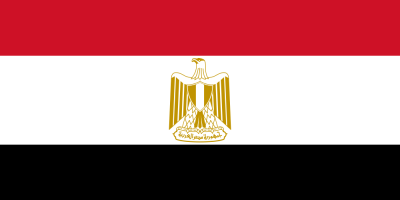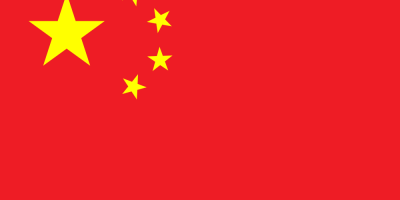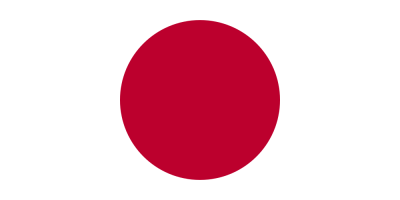Mongolia flag color codes is a powerful patriotic symbol featuring the iconic symbol against a vibrant red backdrop. If you want to accurately recreate this important banner in any digital or print project, having the exact Mongolia flag color codes is essential. This guide provides the definitive specifications including HTML HEX, RGB, PANTONE, HSL, CMYK, HWB and NCOL values for the eye-catching tones of Mongolia’s flag. Now with quick access to the official Mongolia flag color codes, you’ll be equipped incorporate this meaningful Asian flag into graphics, apps, websites and more. Read on for specific color format values and to understand the symbolism behind the stirring red, blue and yellow shades.
Table of Contents
What are the colors of Mongolia flag?
The colors of the Mongolia flag are:
- Red – The main background color covering the entirety of the flag, symbolizing valor, courage and the flames of prosperity.
- Blue – Used to depict key elements of the central soyombo symbol on the flag, representing the eternal blue sky.
- Yellow – Also used in the soyombo symbol, signifies Buddhism and eternality.
So in summary, the three colors represented on Mongolia’s national flag are red, blue and yellow. The red background links to concepts like courage and enthusiasm, while blue and yellow are connected to religion, spirituality and timelessness through the central emblem.
Mongolia flag color codes & Color Names:
RED
| Color Model | Value |
|---|---|
| HTML | #CC162C |
| HEX | CC, 16, 2C |
| RGB | rgb(204, 22, 44) |
| PANTONE | 186 C |
| HSL | hsl(349, 81%, 43%) |
| CMYK | 0%, 89%, 78%, 20% |
| HWB | hwb(349, 0%, 20%) |
| NCOL | 1807 N |
BLUE
| Color Model | Value |
|---|---|
| HTML | #0052A5 |
| HEX | 0, 82, 165 |
| RGB | rgb(0, 82, 165) |
| PANTONE | 286 C |
| HSL | hsl(213, 100%, 32%) |
| CMYK | 100%, 50%, 0%, 35% |
| HWB | hwb(213, 0%, 35%) |
| NCOL | 5345 N |
RED
| Color Model | Value |
|---|---|
| HTML | #CC162C |
| HEX | CC, 16, 2C |
| RGB | rgb(204, 22, 44) |
| PANTONE | 186 C |
| HSL | hsl(349, 81%, 43%) |
| CMYK | 0%, 89%, 78%, 20% |
| HWB | hwb(349, 0%, 20%) |
| NCOL | 1807 N |
What is the meaning of colors in the Mongolia flag?
The meanings of the colors in the Mongolia flag are:
Red – Symbolizes valor, courage, strength, and the flickering flames of prosperity. Represents the burning enthusiasm of the Mongolian people.
Blue – Depicts the clear blue sky which lasts eternally over the vast Mongolian landscape. Associated with spirituality and religiosity.
Yellow – Stands for Buddhism and the immortal soul which persists beyond mortal bounds. Also connected to perseverance.
In summary:
- Red: Courage, passion, enthusiasm
- Blue: Spirituality, eternity, sky
- Yellow: Buddhism, immortality, perseverance
The vibrant red background represents the fiery spirit and pride of Mongolians, while blue and yellow together reflect religious and spiritual symbols of the eternal Mongolian soul and skies as featured in the central emblem.
Explore More Flag Colors:
FAQs: Frequently Asked Questions:
What Mongolia is famous for?
Mongolia is known for several distinctive features and characteristics, including:
Nomadic Culture: Mongolia has a rich nomadic heritage, and a significant portion of the population still practices traditional nomadic lifestyles. The traditional nomadic lifestyle involves herding animals like horses, cattle, sheep, and goats on the vast Mongolian steppes.
Genghis Khan: Mongolia is the birthplace of Genghis Khan, the founder of the Mongol Empire, one of the largest empires in history. Genghis Khan is a revered figure in Mongolian history and is considered the father of the nation.
Mongolian Empire: The Mongol Empire, led by Genghis Khan and his descendants, was the largest contiguous land empire in history. It had a significant impact on global trade, culture, and the exchange of ideas during the 13th and 14th centuries.
Gobi Desert: Mongolia is home to the Gobi Desert, one of the world’s largest and most famous deserts. The Gobi is known for its unique landscapes, including vast sand dunes, rocky terrain, and fossil discoveries.
What is the main religion in Mongolia?
The main religion in Mongolia is Tibetan Buddhism, specifically the Vajrayana school of Buddhism. Buddhism has a deep-rooted history in Mongolia, and it plays a significant role in the country’s culture and traditions. The predominant form of Buddhism in Mongolia is often referred to as “Mongolian Buddhism” or “Mongolian Lamaism,” reflecting the local adaptation and integration of Tibetan Buddhism into Mongolian culture.
Historically, Mongolia has been a stronghold of Tibetan Buddhism, and monasteries, known as “khiid” or “khiil,” were important centers of religious and cultural life. However, during the socialist era of the 20th century, particularly under Soviet influence, Mongolia experienced a period of religious suppression, and many monasteries were either destroyed or repurposed for secular use.
What are the Mongols known for?
The Mongols, an East Asian ethnic group native to Mongolia and surrounding regions, are known for several notable characteristics and historical achievements. Here are some key aspects for which the Mongols are renowned:
Genghis Khan and the Mongol Empire: The Mongols are most famously known for Genghis Khan (c. 1162–1227), the founder of the Mongol Empire. Under Genghis Khan’s leadership and that of his successors, the Mongol Empire became the largest contiguous land empire in history, spanning much of Asia, Europe, and the Middle East.
Military Conquests: The Mongols were exceptional warriors and horsemen. Their military tactics, including the effective use of cavalry and siege warfare, contributed to their success in conquering vast territories.
Nomadic Lifestyle: Traditional Mongolian culture is characterized by a nomadic pastoral lifestyle, where people move with their herds of livestock across the steppes. This nomadic way of life has been integral to Mongolian identity and heritage.
Yurts (Gers): The Mongols are known for their portable, circular tents known as yurts or gers. These structures are well-suited for the nomadic lifestyle, providing shelter in various weather conditions.
Is Mongolia a country or not?
Yes, Mongolia is an independent and sovereign country located in East Asia and Central Asia. It is landlocked between Russia to the north and China to the south, east, and west. Mongolia is known for its vast, sparsely populated landscapes, including the Gobi Desert and the steppes, and it has a rich nomadic culture.
The full name of the country is “Mongolia,” and it is often referred to as the “Mongolian Republic.” The capital and largest city of Mongolia is Ulaanbaatar. Mongolia declared its independence from Chinese rule in 1911 and has maintained its status as a separate nation since then.
What is Mongolia main source of income?
Mongolia’s main sources of income are diverse, but historically, the country has been heavily reliant on natural resources, particularly minerals. Here are some key contributors to Mongolia’s economy:
Mining: Mongolia is rich in mineral resources, and mining plays a crucial role in the country’s economy. Copper, coal, gold, and other minerals are major contributors to Mongolia’s export revenue. The Oyu Tolgoi copper and gold mine is one of the largest mining projects in the country.
Cashmere Production: Mongolia is known for its high-quality cashmere wool, and the cashmere industry is a significant source of income. Mongolian cashmere is sought after globally for its softness and warmth.
Livestock and Agriculture: Traditional nomadic herding of livestock, including horses, cattle, sheep, and goats, remains an important part of Mongolia’s economy. Livestock products, such as meat and wool, contribute to both domestic consumption and exports.
Tourism: Mongolia’s unique landscapes, including the Gobi Desert, steppes, and historical sites, attract tourists interested in outdoor activities, cultural experiences, and wildlife observation. Tourism has been an emerging sector contributing to the economy.
Who is the richest man in Mongolia?
specific information about the richest individual in Mongolia may not be readily available or publicly disclosed. Wealth rankings can change over time, and the financial status of individuals may not always be transparent.
It’s worth noting that Mongolia, as a country, has faced economic challenges, and the concept of personal wealth may be viewed differently than in some more economically developed nations. Additionally, information about the wealthiest individuals is not always publicly disclosed in certain countries.
Are there Muslims in Mongolia?
Yes, there is a small Muslim minority in Mongolia. The majority of the population in Mongolia practices Tibetan Buddhism, and Buddhism has historically been the dominant religion in the country. However, there are also smaller communities of other religious groups, including Muslims.
Islam has a presence in Mongolia, and there are individuals and communities who adhere to the Islamic faith. The Muslim population in Mongolia includes both descendants of historical Muslim communities and individuals who have converted to Islam. The number of Muslims in Mongolia is relatively small compared to the majority Buddhist population.
Is Mongolia a good place to live?
Whether Mongolia is a good place to live depends on individual preferences, priorities, and lifestyle considerations. Here are some factors to consider when evaluating whether Mongolia is a suitable place to live:
Nomadic Culture: Mongolia has a rich nomadic culture, and those who appreciate a traditional, nomadic way of life may find the country appealing. The vast landscapes and nomadic traditions contribute to a unique cultural experience.
Nature and Scenery: Mongolia is known for its stunning and diverse landscapes, including the Gobi Desert, expansive steppes, mountains, and pristine lakes. If you enjoy outdoor activities and the beauty of nature, Mongolia offers a unique environment.
Cultural Heritage: Mongolia has a rich cultural heritage, including traditional music, dance, and art. The country celebrates cultural festivals such as Naadam, which showcases traditional sports like horse racing, wrestling, and archery.
Who defeated Mongols?
The Mongol Empire faced various challenges and eventually experienced a decline, but it’s important to note that the concept of a clear defeat by a specific adversary is not as applicable in the case of the Mongols. The Mongol Empire was vast, and its decline was a complex process influenced by a combination of internal factors, external pressures, and changing circumstances. Here are some key elements contributing to the decline of the Mongol Empire:
Internal Conflicts: Succession disputes and internal conflicts among Genghis Khan’s descendants weakened the unity of the empire. Rivalry and infighting among various branches of the Mongol ruling family, such as the Golden Horde, the Ilkhanate, and the Chagatai Khanate, played a significant role.
Overextension: The Mongol Empire expanded across an enormous territory, and maintaining control over such vast distances became increasingly challenging. Overextension of resources and difficulties in governing such a large area contributed to the empire’s decline.
Resistance from Local Populations: In various regions, local populations resisted Mongol rule. In Russia, for example, the principalities gradually gained independence from Mongol dominance. Similarly, in the Middle East, there were resistance movements against Mongol rulers.
Are Mughals Mongols?
No, the Mughals and Mongols are distinct historical groups, although their names sound similar. The Mughals were a dynasty of Turko-Mongol origin that ruled over much of the Indian subcontinent from the early 16th to the mid-19th century.
The Mughal Empire was founded by Babur, a descendant of Timur (Tamerlane) on his father’s side and Genghis Khan on his mother’s side. The Mughals were of Central Asian Turkic and Mongol descent, but over time, they adopted Persian and Indian cultural influences, particularly in terms of language, art, and architecture.













